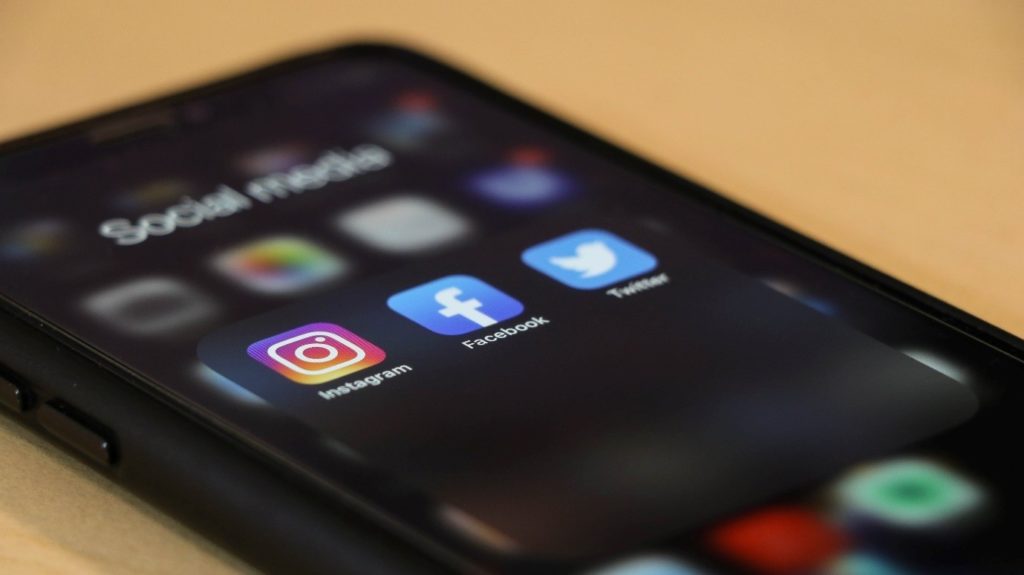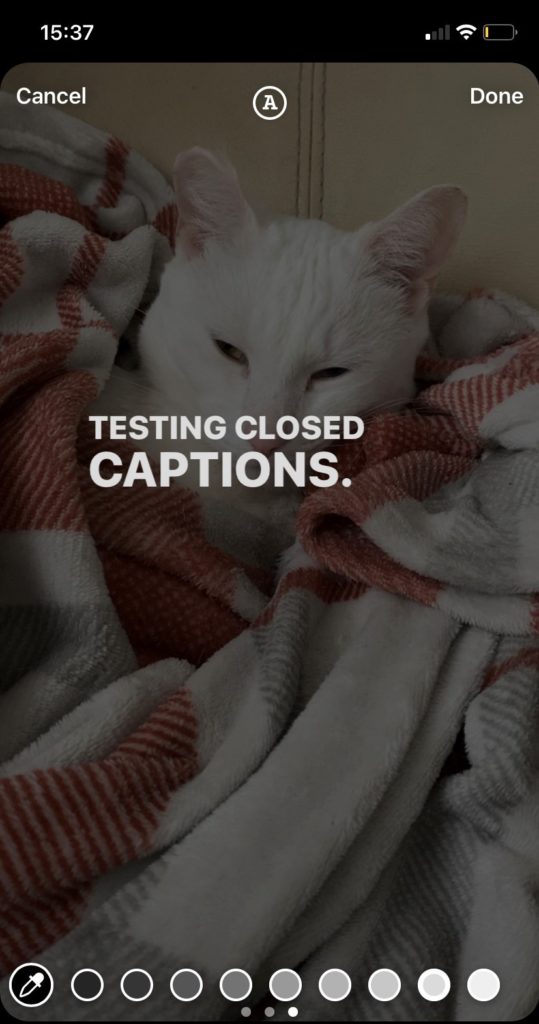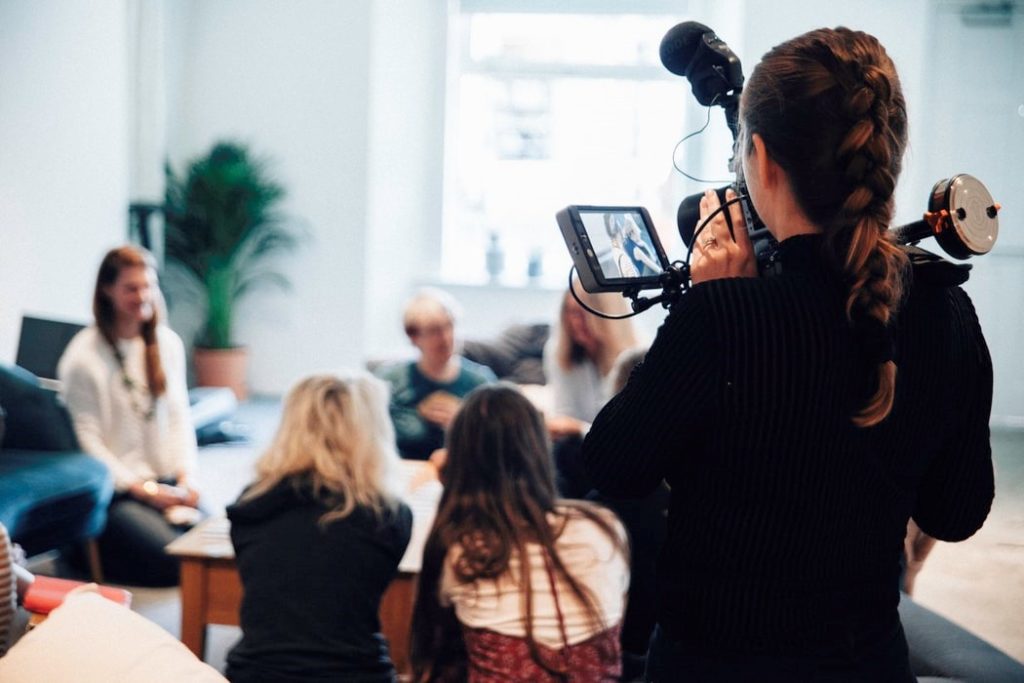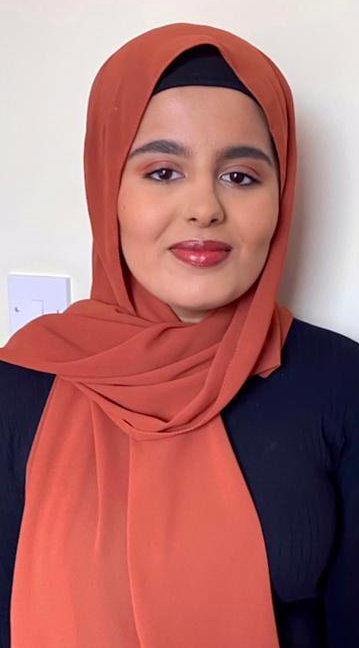
-
Accessibility for All: 8 Ways to Make Your Social Media Content More Accessible.

What is online accessibility and why is it important?
Online accessibility is the practice of making content available to as many people as possible. This means enabling those with disabilities to access content as effectively as those without disabilities.
With an estimated 53 million active social media users in the UK, we tend to take online access for granted. However, at least 1 in 5 people in the UK have a long-term illness, impairment or disability, and many more struggle with temporary disabilities that impact their online experience.
As of 23rd September 2018, accessibility regulations came into force for public sector bodies. However, just because it is mandatory for public bodies doesn’t mean we should not make it a normal part of our online activities. So, how can we start making our social media content more accessible?
Top Tips for Making your Social Media Content More Accessible.
Capitalise your hashtags.
Hashtags written entirely in lower or upper case are difficult to understand. Plus, screen readers will read hashtags as one word if individual words are not differentiated. Capitalise each word in your hashtags. For example, try writing #EdgeHillUniversity instead of #edgehilluniversity.
Add alt text to images.
Alt text describes the appearance and function of an image. This allows screen readers to identify and describe images, giving those with visual impairments, sensory processing difficulties and/or learning disabilities greater access to content. While sites may include image recognition technology that automatically generate alt text, the descriptions they produce are not always accurate. Therefore, it is worth taking the time edit auto generated alt text or to add alt text manually to ensure it is accurate and easy to understand. Keep it concise; 125 words max is a good limit to stick to. Most sites including Facebook, Instagram and Twitter provide options for adding alt text.
Be mindful when it comes to gifs.
Gifs are a fun way to express your feelings, but if they contain flashing content, they can induce seizures in those with photosensitive epilepsy. Avoid gifs containing flickers, flashes and/or blinks. Choose gifs with a pause option, or gifs that are set to stop after 5 seconds. And remember to add alt text that describes the gif’s content.
Provide captions for videos.
Captions are text versions of a video’s audio content. Captions are synchronised with the video’s content and enable those with impaired hearing to interact with videos. Facebook, Instagram, Twitter and Tik Tok allow you to add auto generated captions to your video posts, stories and reels. Another way to increase accessibility is by providing a transcript or description of your video within your post caption.
You can download apps such as AutoCap and Voicella that enable you to add video captions manually. This is a good idea if you are using a feature that doesn’t enable editable auto captions.

Testing closed captions in an Instagram story. Limit your emoji use.
Emojis may look cute, but they aren’t always compatible with accessibility software. Text to speech and screenreaders typically generate descriptions for each emoji you use. For example, if you add five heart emojis in succession, this will be read as: “Heart heart heart heart heart”. So, try to avoid overdoing it. 2-3 emojis per post is good limit to stick to.

Avoid small fonts and custom fonts.
Customising with fun fonts and bold, italicised and/or underlined text may be a good way to make your online content stand out, but it’s not the easiest to read.Avoid ‘serif’ fonts, which are ornate fonts such as Garamond, Baskerville, Georgia and Courier New. It is best to stick to standard, ‘non serif’ fonts, such as Ariel, Calibri, Century Gothic, Helvetica and Verdana. You should also avoid using small font, which is tricky to read. For example, don’t cram a lot of tiny text into an Instagram story – simplify your message, or spread your text across a few posts to ensure readability.Pay attention to colour contrast.
For most people, low colour contrast makes content difficult to understand, but it is especially difficult for those with visual impairments. Make sure there is sufficient contrast between foreground and background colours; for example, avoid using a pale font on a light background or deep font on dark background. You should also avoid colour combinations that make things indistinguishable to those who are colour-blind, such as green/red, blue/yellow and purple/dark blue. A common, colour-blind friendly combination is blue/orange.
Try familiarising yourself with accessible colour combinations with this handy Coloring for Colorblindness guide. You can also check out WebAim contrast checker.Keep on top of new accessibility features.
Now that you know some of the basics, you’re ready to start making your social media content accessible. But don’t just rely on these pointers. Expand your understanding of accessibility and stay alert to any new features rolled out by the platforms you use.
For more information on digital accessibility, you can visit the UK Government guidance on accessible communications. If you would like to learn about writing with accessibility, please visit our Build Accessible student support guide.
By Laura Glancy (Student Intern)

-
Student Intern – Medical School Blog
Hi,
My name is Safiyyah, I am a medical student and more importantly, a Digital Student Intern at Edge Hill University. I will be sharing the various roles the interns within the Medical school have undertaken and how these roles may differ from the ‘typical’ intern’s assignments.

Within the first week of the student internship we were all given the initial training in regard to Blackboard and accessibility and a few pieces of software that we might be required to use, such as Panopto. It was highlighted that the majority of the interns would be working on making documents accessible within their department, this would most likely be the main project. It was clear this was not going to be the case within the Medical School through the project plans made available to us. The Medical School had been allocated three interns, two of which are Medical Students and the third is a Creative Writing Student. This aligned with the Medical School having three current projects. It was agreed upon that I was to undergo work on the Widening Access to Medicine project whilst my fellow interns undertook the Equality, Diversity, Inclusion project alongside the Postgraduate project. The allocation of projects seemed fitting as I had volunteered to help the WAM project previously and the EDI project required the skills of a creative writer.
Upon starting work on the WAM project during week 2, I was excited to get stuck in. As were we all! We all started with research tasks in our prospective projects where we would gather information regarding the topic we were given. So, for me, I was tasked with finding all the universities that had a widening access to medicine programme and make notes on the information they had available and what they offered within their programme. This research has deemed to be invaluable to me for the following tasks I was assigned. Following on from the research, the projects have involved the student interns identifying suitable candidates for clinical skills scenarios, creating scenarios that can be used in the future, filming a scenario for a summer school event taking place for a WAM event, and many more.

Pivotally, we have enjoyed working within the Medical School as we have found it to be eye opening to think about the challenges that are involved in recruiting a diverse group of simulated patients and how we can overcome these challenges. We have enjoyed exploring the websites and finding areas in which EHU can improve whilst learning new terminology and becoming familiar with the simulation centre. We all agree that it is a nice feeling knowing that our work throughout this internship will have a positive impact on future students.
At the end of the day, the work all our Digital Student Interns are doing is invaluable as it will be of benefit for both current and future students. So keep up the good work guys!
By Safiyyah Mahmood (Student Intern)

-
Overcoming Anxiety Limitations

My name is Amber Berry and I have anxiety. This sounds like a weird confession, or a secret coming out. The word anxiety itself I think is a word that scares a lot of people, purely because they don’t understand it. Or it’s the other end and they know exactly what it is and that’s exactly what scares them. I don’t think it has to be any of these things, it’s simply a small part of me. Not a part of who I am, but still its apart of my being. It’s a part of my being that brings struggles and I was scared that these struggles would affect my performance during the student internship. However, the internship has done something that I didn’t expect. It’s helped me improve. In this blog post, I’m hoping to detail how and that if anyone sees this who is interested in similar opportunities but is worried of being overwhelmed. I want to reassure you that it isn’t as immense or intimidating as it might seem.

People. Now people are an interesting subject for me. I love them but new people…. I shrivel into a cocoon and want to hide from the world. It comes from a fear of judgement being afraid that myself is too much. Yet, there’s two things that’s slowly allowed me to start to eradicate this fear. Firstly, the people aren’t the people that we fear. Everyone I’ve met so far on this internship have been some of the most accepting, caring, and welcoming people. Everyone completely different but still helping each other. Also, with most of the interactions taking place online. I’ve been able to face my social fears from the comfort of my living room. As little as it might sound, being in a space that is familiar removes some of that facing the unknown which can be so daunting. I was talking to people in the space filled with memories with all the people I loved. In the place where the goofiest, real me wan usually on full display. Why should I let that change just because a camera is on? That made the biggest difference of all, because if people are being so kind and accepting of the real version of me, there was nothing to be afraid of.
Well, there’s one of the biggest obstacles taken care of but I know there’s more. I was scared that I might be too overwhelmed and that the work might feel like a tidal wave. It had happened before with university work at times and I didn’t want to push myself to hard. But the internship has taught me some valuable lessons on how to manage this stress. We use outlook calendar to view our meetings and see things clearly. I’ve figured not only having a routine but being able to see it visually and clearly helped immensely. It made me feel prepared and ready for the weeks. Moreover, I’ve been able to learn how to keep a work and life balance. Whereas at university I found it difficult to split my time between them. I now know when I need a break, what to do on said break, when I need to see some of my favourite humans and sometimes when I just need to be alone. It’s something that I wish I had known a long time ago, and it’s something I don’t think a lot of people think about.
I want this to be an encouragement, to everyone who worries their differences, or their fears will be obstacles. Even if they are, it won’t control your experience and there’s the possibility to accomplish things you’d never expect. Don’t let yourself be held back by anything, take control and remember that nothing defines you unless you allow it to.
By Amber Berry (Student Intern)

